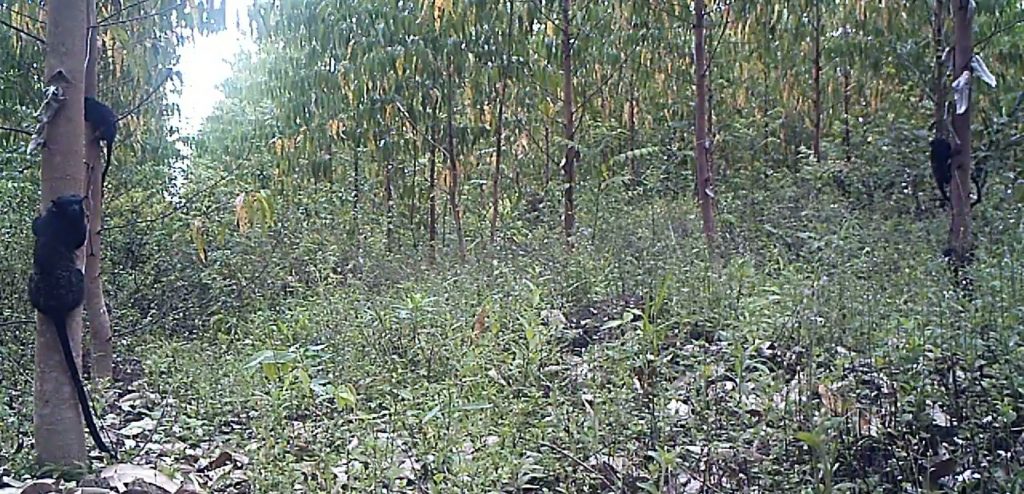When immersed between patches of savannas and forests, eucalyptus plantations have a complementary role to native environments in maintaining the richness and occurrence of some mammal species

Photo: Tony Noriega Piña
The establishment of protected areas is one of the main conservation strategies adopted to halt the loss of biodiversity. However, agrosystems have dominated many landscapes around the world, reducing local biodiversity, and it is unlikely that protected areas alone will be sufficient for biodiversity conservation. Planted forests, although generally leading to a net loss of species, can sustain a significant portion of biodiversity, especially depending on the context in which the planted forest is implemented. Thus, it is crucial to understand the factors that promote biodiversity in these areas. To do so, we used camera traps and line transects to record the medium and large mammals that use the eucalyptus plantations and associated native environments (savannas and forests) in the central region of Amapá.
The results indicate that the three environments investigated (eucalyptus plantations, forests and savannas) presented similar levels of richness and diversity of medium and large mammals. However, not all species use eucalyptus plantations. The occurrence of the species also depends on the surroundings of the place where they were recorded, that is, the richness and abundance of mammals were higher in places with less roads, close to forests and without much transitions between different environments. Considering that the species of mammals differed in relation to the characteristics that favored their occurrence, the maintenance of areas with different characteristics (e.g. different proportions of native environments and plantations) in the same landscape can meet these requirements and sustain high biodiversity.
The results were published in the journal Forest Ecology and Management [1] and are the result of the master’s thesis of Tony Noriega, with the guidance of Renato Hilário (PPGBio – UNIFAP), William Carvalho (Pos Doc PPGBio – UNIFAP) and Miguel Rosalino (University of Lisbon, Portugal). The project received financial support from PROAPFAP/UNIFAP and logistical support from AMCEL – Amapá Florestal e Celulose.
[1] Piña, TEN, WD Carvalho, LMC Rosalino, and RR Hilário. 2019. Drivers of mammal richness, diversity and occurrence in heterogeneous landscapes composed by plantation forests and natural environments. Forest Ecology and Management 449: 117467. https://doi.org/10.1016/j.foreco.2019.117467
0 Comments